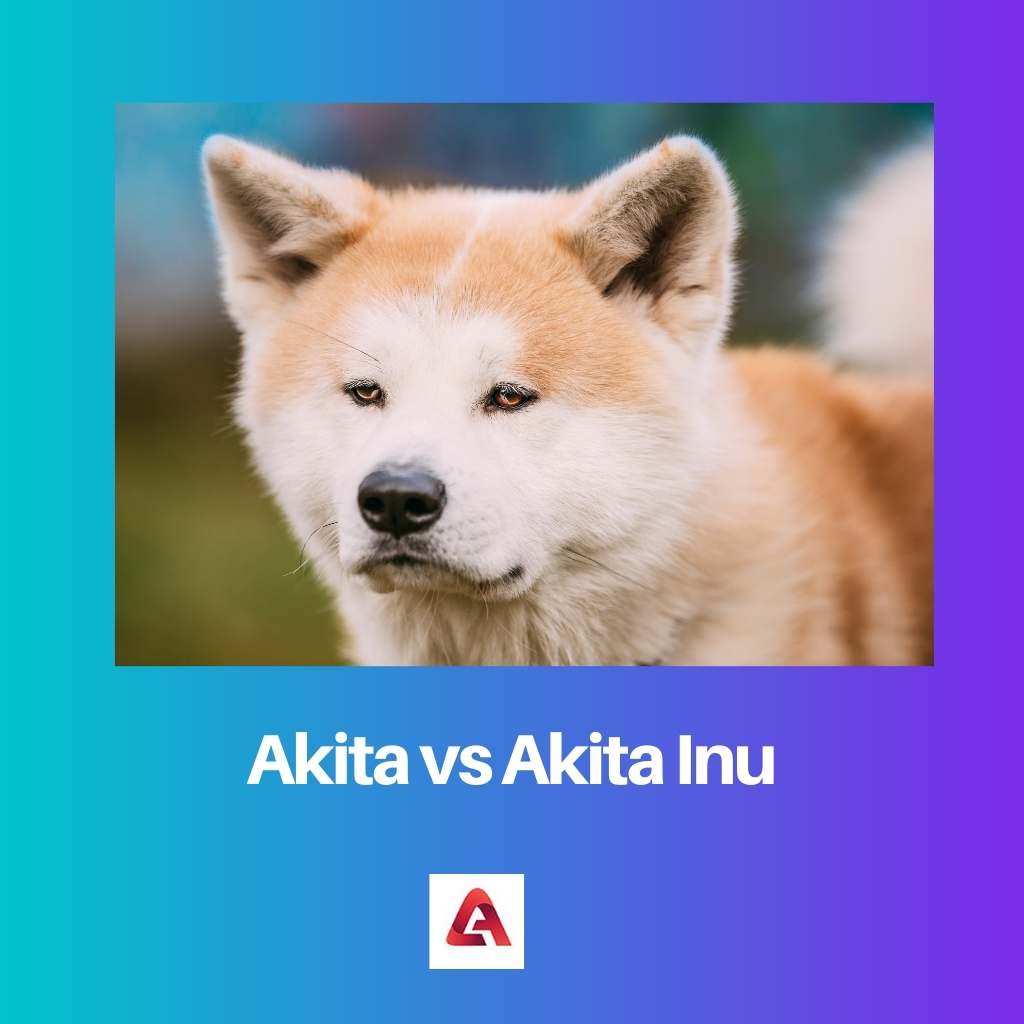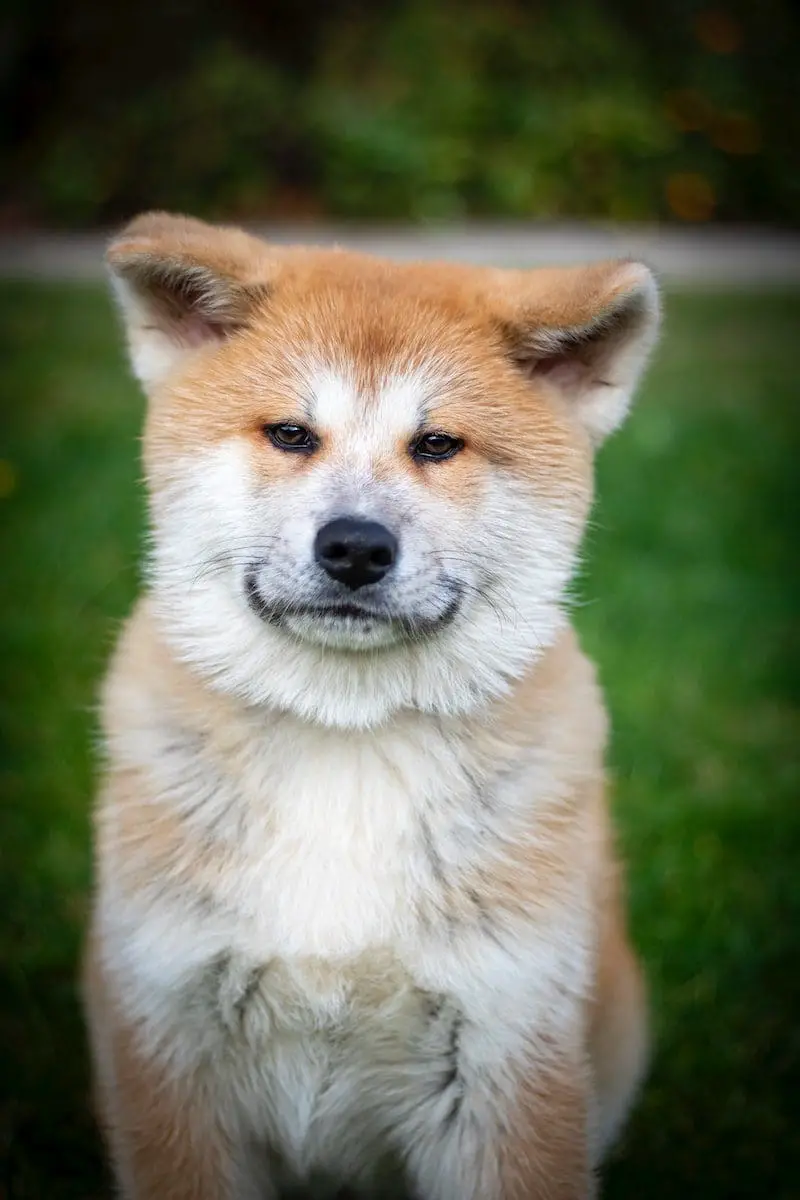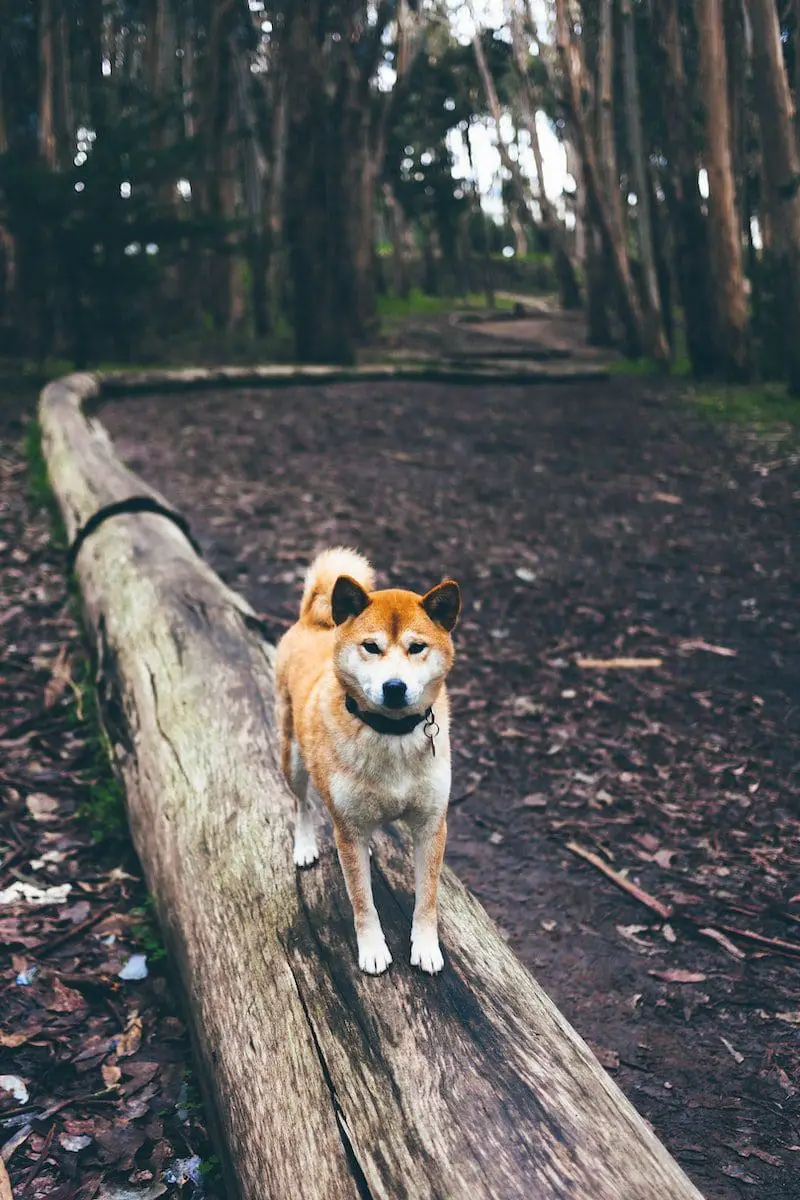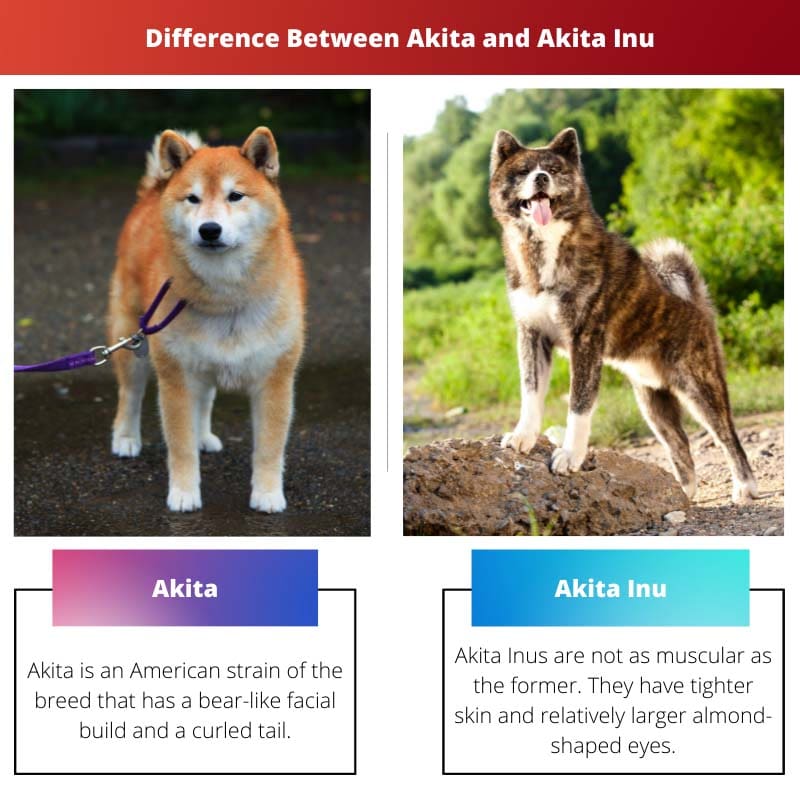Dogs have been faithful companions to man throughout history. They are domesticated omnivores that descended from wolves thousands of years ago. Since then, they have helped people hunt, herd, pull sledges, and have even assisted those who are handicapped. Akita and Akita Inu are two breeds of dogs with several differences.
Key Takeaways
- Akita is a breed of dog originating from Japan, while Akita Inu refers specifically to the Japanese strain of the breed.
- Akitas are larger and have a broader range of coat colors, while Akita Inus have a more restricted color palette.
- Akita Inus have a slightly more reserved temperament than Akitas, who can be more outgoing.
Akita vs Akita Inu
The Akita Inu is a large breed of dog that originated in Japan. They are known for their loyalty, courage, and intelligence, and are used as therapy dogs. Akita is a shortened version of “Akita Inu,” meaning “dog of the Akita region” in Japanese, and is sometimes referred to as “Akita-ken” in Japan.

Akita is an American breed strain with a bear-like facial build and a curled tail. Its ears and triangular and slightly bent forward. Moreover, it has small gaping eyes that differ from traditional Akita dogs. The dog is characterized mainly by its muscular build and loose skin.
Akita Inus are not as muscular as the former. They have tighter skin and relatively larger almond-shaped eyes. Their ears are triangular and erect. A fox-like facial build separates them from the American strain. One of the most famous dogs that are of this breed was Hachiko, who waited for his owner every day at the station in Central Tokyo.
Comparison Table
| Parameters of Comparison | Akita | Akita Inu |
|---|---|---|
| Strain | Akita is an American strain of the breed. | Akita Inu is a Japanese strain of the breed. |
| Size | It can grow up to a height of 24 to 26 inches. | It can grow up to a height of 23 to 25 inches. |
| Weight | It weighs 32 to 60 kilograms when fully grown. | It weighs up to 20 to 55 kilograms when fully grown. |
| Facial structure | It has a bear-like facial structure. | It has a fox-like facial structure. |
| Ears | It has triangular ears which are slightly bent. | It has triangular ears that stand erect. |
| Eyes | It has small gaping eyes. | It has relatively larger almond-shaped eyes. |
| Colour | It can be of any possible colour that dogs have. | It comes in red, orange, or brindle colour. |
What is Akita?
Akita, also referred to as American Akita, is an American strain of the breed. It has its origins in Japan. However, in the time after World War II, US military personnel who were posted in Japan were mesmerized by this breed. They brought it back to their homeland when their tour was completed. The dogs intimidating muscular body impressed the soldiers.
This breed of dog is relatively larger than traditional Akita Inus. They have bear-like heads and heavier bones. Even their height and weight turn out to be greater than the original breed. Earlier, these dogs only came in white, red or brindle colours. However, they later came in every possible colour for a dog.
American Akitas do not require much maintenance, making their breeding and caring process relatively simple. These dogs tend to groom themselves as cats do. However, they shred their hair a lot, and that too at least twice in one year.
People who have not owned a dog before are advised not to adopt an Akita. This is because these dogs are extremely territorial and not very friendly to strangers. Interestingly, most of these dogs are known to have a soft spot for children. However, this is not always the case for them.

What is Akita Inu?
Akita Inu is a traditional Japanese breed that has quite a few differences from American Akitas. The dogs are smaller in size and weight. They are not as muscular and have relatively tighter skin. Their face is like that of a fox, and they have small almond-shaped eyes. They only come in orange, red or brindle colours.
These dogs have their roots in snowy regions of Northern Japan. Originally, they were trained to hunt other animals. They are even known to have accompanied Samurais back in the day. However, their intimidating behaviour caught the eyes of dogfighters, who used them for their benefit.
However, during World War II, the breed was nearly extinct. During the war, these dogs were not able to have a nutritious diet. Many of them died, after which their fur was used to make coats. Some people even used to eat them to save themselves from starvation but used to catch a disease because of it.
The breed is known to be very intelligent. One of the most famous dogs of this breed is the famous Hachiko. This dog waited for its owner every day at the Shibuya Train station for his professor, even after his death. A statue that still stands outside the station has been made in his memory.

Main Differences Between Akita and Akita Inu
- Akita is an American strain of the breed, whereas Akita Inu is a Japanese strain of the breed.
- Akita can grow up to a height of 24 to 26 inches, whereas Akita Inu can grow up to a height of 23 to 25 inches.
- Akita weighs 32 to 60 kilograms when fully grown, whereas Akita Inu weighs up to 20 to 55 kilograms when fully grown.
- Akita has a bear-like facial structure, whereas Akita Inu has a fox-like facial structure.
- Akita has triangular ears, which are slightly bent, whereas Akita Inu has erected ears.
- Akita has small gaping eyes, whereas Akita Inu has relatively larger almond-shaped eyes.
- Akita can be of any possible colour that dogs have, whereas Akita Inu comes in red, orange, or brindle colour.

- https://onlinelibrary.wiley.com/doi/abs/10.1111/j.1751-0813.2001.tb14572.x
- https://europepmc.org/article/med/3926378

The comparison table was particularly helpful. It provides a clear and concise summary of the key differences between the two breeds.
I agree, the comparison table was a great addition. It made it easy to understand the distinctions between Akita and Akita Inu.
I appreciate the historical context and the focus on the breed’s origins. It adds depth to our understanding of these impressive dogs.
The history about the origin of the breeds was fascinating. It’s always interesting to learn about the roots of different dog breeds and how they have evolved over time.
Absolutely, the story of Hachiko was also very touching. It’s amazing to see the impact these dogs have had on human history.
I found the information about Akita Inu’s history during World War II particularly compelling. It really highlights the resilience and intelligence of the breed.
It’s clear that both Akita and Akita Inu have unique attributes that make them special. Understanding these differences can help individuals choose the right breed for their lifestyle.
Very informative article. It was interesting to read about the differences between Akita and Akita Inu. This is a very important thing for dog lovers to know.
The information provided really sheds light on the distinct characteristics of these two breeds. It’s evident that each breed has its own set of traits and qualities.
The descriptions of Akita and Akita Inu were very well-detailed and informative. This is a valuable resource for anyone interested in learning about these breeds.
The details about their physical appearance and characteristics were very comprehensive. It’s important to understand these differences, especially for those considering adopting one of these breeds.
Agreed, knowing the specifics about their facial structure, ears, eyes, and size is crucial for potential owners.